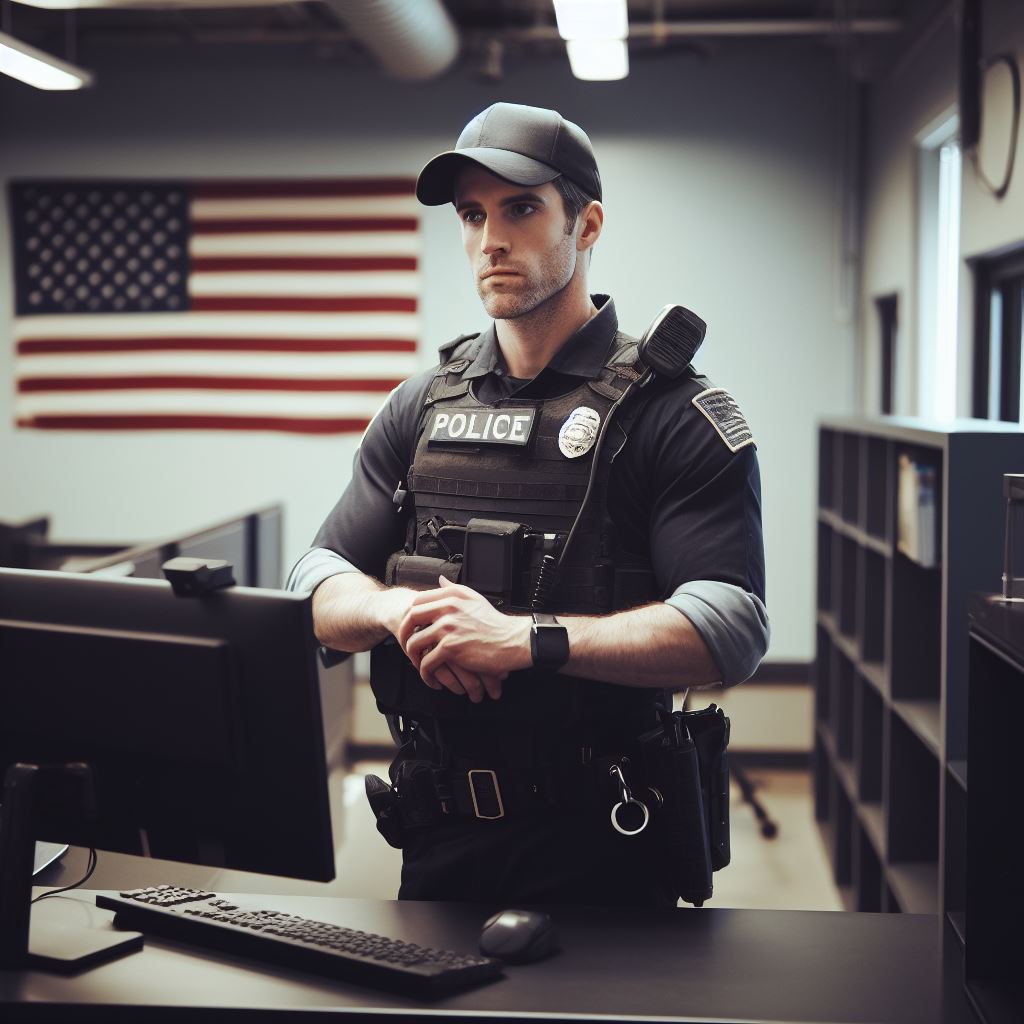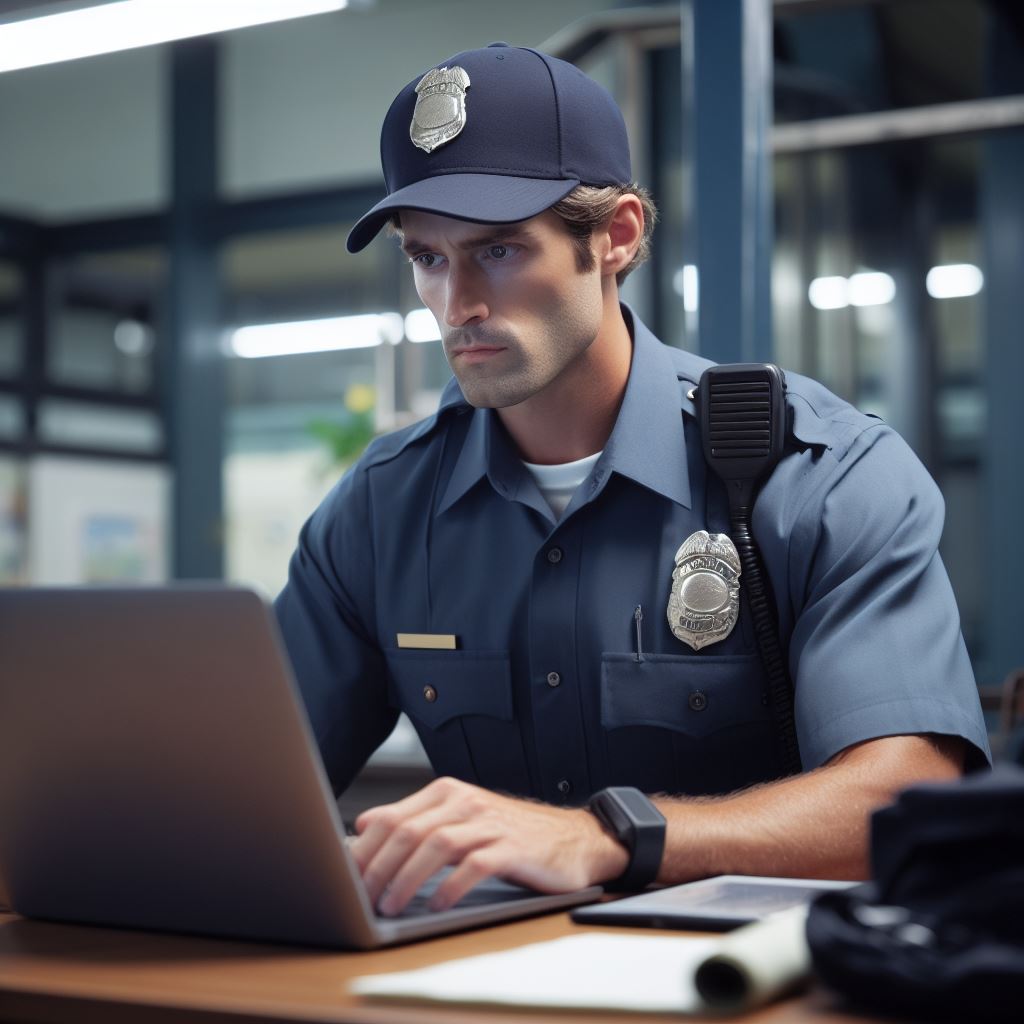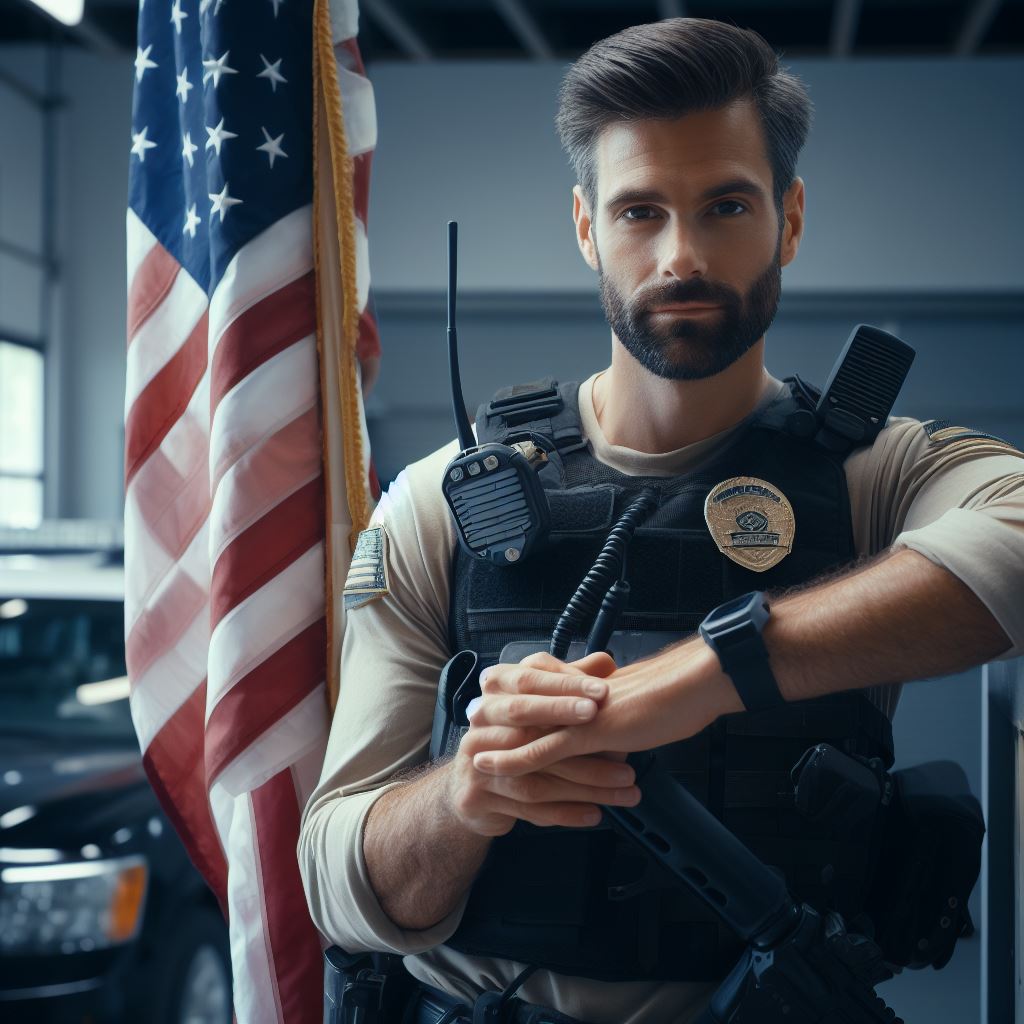Introduction
The importance of diversity in police forces
Recognizing the pivotal role of diversity in police forces, this introduction highlights its importance for fostering effective community policing, building trust.
Also enhancing mutual understanding between law enforcement and the communities they serve.
The current state of diversity in US police forces
Delving into the current state of diversity in US police forces, the landscape reveals existing challenges that hinder the realization of optimal diversity and inclusion.
Understanding the complexities and nuances of this issue is essential to pave the way for constructive discussions and meaningful change.
The main points to be discussed in the blog post
This blog post sets the stage for an in-depth exploration of the multifaceted aspects of diversity within US police forces.
It will scrutinize existing challenges, delve into potential solutions, and shed light on the implications for both law enforcement agencies and the communities they aim to protect and serve.
Join us as we navigate the intricate terrain of diversity in US police forces, uncovering insights that contribute to the ongoing dialogue on this critical topic.
Historical Overview
Historical Context of Diversity in US Police Forces
- The historical context of diversity in US police forces is worth understanding.
- In the early 19th century, police departments were predominantly composed of white officers.
- African Americans and other minority groups faced exclusion and discrimination from joining law enforcement.
- Discrimination was reinforced by societal prejudices and systemic racism.
- Minority groups faced limited opportunities, unequal treatment, and unfair practices within police departments.
Challenges Faced by Minority Groups in Joining Law Enforcement
- Minority groups encountered multiple challenges when trying to join law enforcement.
- Recruitment processes often favored white applicants, excluding qualified minorities.
- Unconscious bias and stereotypes played a significant role in hindering minority participation in police forces.
- Preconceived notions about the capabilities and trustworthiness of minority officers created barriers.
- Discrimination and hostility within police departments further discouraged minority candidates.
Initiatives to Promote Diversity in Police Forces
Various initiatives address police force diversity. In the 1960s and 1970s, civil rights movements influenced systemic changes and introduced affirmative action programs.
Recruitment campaigns, training programs, and cultural sensitivity workshops aimed to increase minority representation.
Diversity quotas, community partnerships, and collaborations with civil rights groups were established. Mentorship programs and diversity and inclusion units were created.
Implicit bias training became crucial, and police leadership played a vital role.
Continuous evaluation and improvement of diversity initiatives remain essential. Understanding historical context highlights challenges faced by minorities.
Initiatives have been implemented, but addressing biases, improving recruitment, and fostering partnerships are ongoing efforts for more diverse police forces.
Current Statistics and Trends
Statistical Data on Representation of Racial and Ethnic Groups in Police Forces
- According to recent data, African Americans make up around 12% of the US population but only 11% of police officers.
- Hispanic representation in police forces has increased slightly, with Hispanics accounting for about 18% of officers compared to their 16% national population share.
- Asian Americans constitute around 6% of the US population but only 2% of police officers.
- The representation of Native Americans in police forces is considerably low, with less than 1% of officers being Native American.
Trends Observed in Recent Years
- In recent years, there have been efforts to increase diversity in police forces across the country.
- Some departments have implemented targeted recruitment strategies to attract candidates from underrepresented racial and ethnic groups.
- However, the overall progress in diversifying police forces has been slow, and the disparities still persist.
- Public scrutiny of police practices in relation to racial profiling and excessive use of force has put pressure on departments to address diversity issues.
- Major incidents, such as the killing of George Floyd, have sparked nationwide protests and reinvigorated the call for increased diversity and accountability in law enforcement.
Factors Influencing the Current State of Diversity
- Recruitment efforts play a significant role in shaping the racial and ethnic composition of police forces.
- Social and cultural factors can also influence individuals’ decisions to join law enforcement.
- Historical barriers, discrimination, and lack of trust between law enforcement and minority communities contribute to the underrepresentation of certain groups.
- Efforts to improve community relations and build trust can positively impact the diversification of police forces.
- Providing training and education on cultural competency and implicit bias can help address the systemic issues that hinder diversity.
In essence, the current statistics indicate a disparity in the representation of different racial and ethnic groups in US police forces.
While some progress has been made in recent years, there is still a long way to go in achieving true diversity.
Recruitment efforts, community relations, and addressing systemic issues are crucial in shaping the future of law enforcement and ensuring that police forces reflect the communities they serve.
Read: Fire Department Hierarchies: From Rookie to Chief
Benefits of Diversity in Police Forces
The importance of diverse perspectives and experiences in law enforcement
- Diverse perspectives bring a range of viewpoints, which can lead to more effective problem-solving.
- Different experiences can enhance empathy and understanding among officers when dealing with diverse communities.
- Incorporating diverse perspectives can help identify innovative strategies to address complex challenges.
How diversity can improve community trust and police-community relations
- Diverse police forces help bridge the gap between law enforcement and underrepresented communities.
- Minority officers can serve as cultural liaisons, reducing cultural misunderstandings and building trust.
- When the police force reflects the community it serves, community members feel more comfortable reporting crimes.
The potential impact of diverse police forces on reducing biased policing and fostering fair treatment
- Diversity decreases the likelihood of biased policing by promoting a broader understanding of different cultures and backgrounds.
- Officers from minority communities can challenge biased assumptions within the force.
- A diverse police force instills confidence in the community that they will receive fair treatment regardless of their background.
Lastly, diversity plays a crucial role in improving the effectiveness and trustworthiness of police forces.
Police departments that prioritize diversity benefit from a broader range of perspectives that lead to more effective problem-solving and understanding within their communities.
By incorporating officers from diverse backgrounds, law enforcement agencies can bridge the gap between themselves and underrepresented communities, ultimately enhancing police-community relations.
Furthermore, promoting diversity within police forces reduces biased policing.
Officers with diverse backgrounds better understand cultures, challenging biased assumptions and fostering community trust.
This is crucial for police reform, diversity and inclusion, and community relations.
Transform Your Career Today
Unlock a personalized career strategy that drives real results. Get tailored advice and a roadmap designed just for you.
Start NowUltimately, embracing diversity in law enforcement is not only important but also necessary for creating more just and equitable societies.
Read: Key Skills Every U.S. Firefighter Must Possess
Challenges and Roadblocks
Barriers to Achieving Diversity and Inclusion in Police Forces
- Lack of representation from minority communities in recruitment pipelines.
- Institutional discrimination that discourages people from diverse backgrounds to join.
- Poor community relations in historically marginalized neighborhoods.
- Inadequate resources dedicated towards diversity recruitment efforts.
- Resistance to change and maintaining the status quo in police departments.
Impact of Implicit Biases and Discrimination in Recruitment and Hiring Processes
- Unconscious biases influencing decision-making in candidate selection.
- Discriminatory practices that favor certain demographics and exclude others.
- Negative stereotypes associated with minority candidates affecting their chances of getting hired.
- Lack of transparency and accountability in recruitment processes leading to unequal opportunities.
- Misunderstanding the benefits of diversity and underestimating its value in police forces.
Significance of Cultural Competence Training for Police Officers
- Educating officers on the importance of cultural sensitivity while interacting with diverse communities.
- Building trust and establishing positive relationships between police officers and the community.
- Enhancing officers’ ability to navigate cultural differences and respond appropriately to various situations.
- Reducing instances of biased profiling and discriminatory practices during law enforcement activities.
- Improving communication and understanding between officers and community members from different backgrounds.
Addressing challenges in achieving diversity and inclusion in police forces requires acknowledging and understanding barriers.
Lack of representation from minority communities in recruitment pipelines stems from institutional discrimination and historical mistrust.
Negative stereotypes and unconscious biases in hiring processes perpetuate underrepresentation.
Cultural competence training is vital to educate officers on cultural sensitivity, enhancing their ability to navigate differences and reduce biased profiling.
Building trust between officers and communities is crucial for improved relations. Investing in cultural competence training improves communication, helps officers recognize biases, and fosters fair and unbiased justice.
Recognizing the value of diversity is essential to break resistance and foster inclusivity.
Overcoming challenges involves addressing barriers, mitigating biases, and prioritizing cultural competence training for a more diverse and inclusive policing environment.
Read: Volunteer Firefighters: The Unsung Heroes in the U.S.

Delve into the Subject: The Evolution of Military Uniforms Through the Ages
Learn More: Challenges of Urban vs. Rural Firefighting in the U.S.
Initiatives and Reforms
Strategies and Programs Implemented
- Targeted recruitment campaigns to attract minority candidates.
- Expanding recruitment efforts to historically underrepresented communities.
- Establishing partnerships with local organizations to promote diversity in recruitment.
- Providing incentives such as scholarships or tuition assistance for minority candidates.
- Implementing bias training for police officers to address unconscious biases.
- Creating mentorship programs to support and guide minority officers.
Effectiveness of These Initiatives and Potential Areas for Improvement
The implementation of these initiatives has led to some positive changes in diversifying police forces, but there is room for improvement in several areas:
- Retention of minority officers remains an ongoing challenge.
- Training programs need to be regularly evaluated and updated to ensure effectiveness.
- Police departments should strive to create a welcoming and inclusive environment for all officers.
- Reducing implicit biases among police forces requires continuous education and awareness.
While progress has been made, there is still work to be done in order to achieve true representation and diversity in police departments.
Successful Case Studies
Several police departments have made significant strides in promoting diversity and inclusion:
- The Seattle Police Department has implemented community-led recruitment initiatives, resulting in a more diverse force.
- The Los Angeles Police Department established recruitment programs targeting minority neighborhoods, leading to increased diversity.
- The Atlanta Police Department has successfully created mentorship programs and implemented bias training for its officers.
- The NYPD has focused on hiring bilingual officers to better serve its diverse population.
These case studies demonstrate that with the right strategies and commitment, police departments can make substantial progress towards achieving diversity and inclusion.
In fact, initiatives and reforms designed to increase diversity in police departments have been implemented worldwide.
While progress has been made, there is still room for improvement. Ongoing efforts to attract and retain minority officers, evaluate and update training programs, and create inclusive environments are crucial.
By highlighting successful case studies, we can learn from their strategies and strive towards more representative and inclusive police forces.
Read: Rituals and Traditions in U.S. Firefighting Culture
Transform Your Career Today
Unlock a personalized career strategy that drives real results. Get tailored advice and a roadmap designed just for you.
Start NowThe Role of Community Engagement
The importance of community involvement in diversifying police forces
- Engaging with the community is crucial for police forces to foster trust and understanding.
- By actively involving the community, police departments can build relationships and bridge the gap between civilians and law enforcement.
- Community involvement helps police forces gain a better understanding of the local needs and concerns.
- Through regular interactions, police officers can address community issues effectively and create a safer environment for everyone.
Collaborative efforts between police departments and community organizations
- Police departments should actively collaborate with local organizations to support and strengthen community ties.
- Partnerships with community organizations promote mutual understanding and foster a sense of shared responsibility.
- By working together, police officers and community organizations can develop initiatives for crime prevention and social welfare.
- Collaborative efforts enable effective problem-solving by addressing the root causes of crime and ensuring long-term community safety.
The benefits of diverse recruitment strategies and community partnerships
Diverse recruitment strategies are essential for police forces to reflect the demographics of the communities they serve.
- By actively seeking candidates from different backgrounds, police departments can enhance cultural competency and eliminate biases.
- A diverse police force can better understand and respond to the unique needs and challenges faced by various communities.
- Community partnerships play a crucial role in attracting diverse candidates and fostering a positive perception of law enforcement.
- Collaborating with community organizations can help police departments access underrepresented groups and build trust.
- Increased community trust leads to better cooperation, information sharing, and ultimately, more effective policing.
In summary, community engagement is vital in diversifying police forces and improving overall police-community relationships.
By emphasizing the importance of community involvement and implementing diverse recruitment strategies, police departments can create a more inclusive and representative law enforcement agency.
The active engagement of community organizations not only helps attract diverse candidates but also fosters trust and understanding between the police and the public.
It is through these partnerships and strategies that we can work towards a safer and more inclusive society.
Conclusion
This blog post has highlighted the current state of diversity in US police forces.
It has emphasized the importance of diversity in promoting a fair and equitable society.
To ensure progress, the call for continued efforts and reforms to improve diversity and inclusivity is essential.
Achieving diversity in police forces is an ongoing process that requires collaboration and commitment from all stakeholders.
It is crucial to recognize that diversity goes beyond mere representation, but also encompasses a diverse range of perspectives and experiences.
When police forces reflect the communities they serve, trust and legitimacy are fostered, leading to better outcomes for all.
The significance of diversity in US police forces cannot be overstated, as it enhances the quality of law enforcement practices and builds community relationships.
Efforts to improve diversity should be coupled with increased training and awareness on cultural competency, implicit bias, and de-escalation techniques.
Police departments should actively recruit and retain individuals from underrepresented groups to ensure a diverse workforce.
Additionally, measures such as community engagement programs can help bridge the gap between police and marginalized communities.
It is imperative for policymakers, law enforcement agencies, and the public to recognize that diversity is not a trend but a necessity for effective and just policing.
By prioritizing diversity and inclusivity, US police forces can promote fairness, reduce disparities, and work towards creating safer, more inclusive communities for all citizens.
Therefore, it is imperative that efforts continue to be made towards improving diversity in US police forces to achieve a more just society.
[E-Books for Sale]
The Big Book of 500 High-Paying Jobs in America: Unlock Your Earning Potential
$19.99 • 500 High-Paying Jobs • 330 pages
Explore 500 high-paying jobs in America and learn how to boost your career, earn more, and achieve success!
See All 500 High-Paying Jobs of this E-Book
1001 Professions Without a Degree: High-Paying American Jobs You Can Start Now
$19.99 • 1001 Professions Without a Degree • 174 pages
Discover 1001 high-paying jobs without a degree! Unlock career tips, skills, and success strategies for just $19.99!




